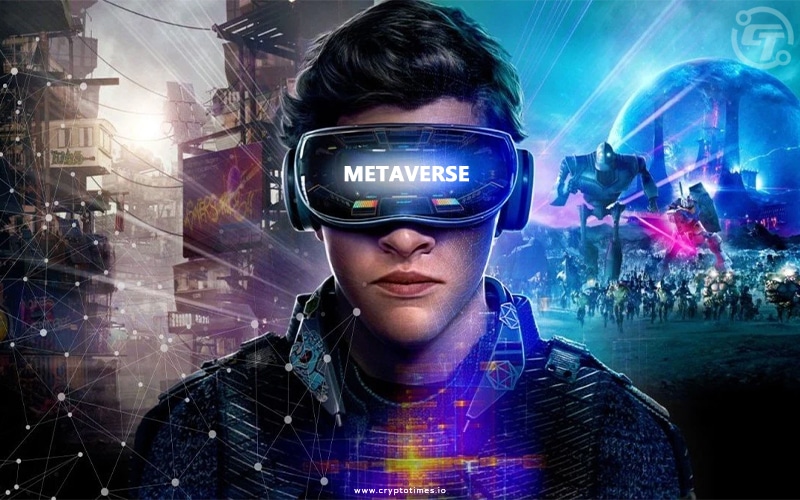Though elementary in nature, the potential impacts of the metaverse could have far-reaching consequences. The metaverse is already making it possible to move digital information from flat screens into three-dimensional environments, where it can be experienced in a much more natural way, like going from looking at a blueprint to really walking inside a structure.
At the same time, it will aid in the process of converting expertise in the physical world to computer code.
The end result will be an interconnected network of data that is aware of its location and can use that knowledge to improve the manner in which we operate and give the software a better grasp of the real world.
Maximizing The Potency of Metaverse
To realize this vision, however, we need cutting-edge hardware and software, including not only high-performance processors but also advanced optics, headsets, sensors, regionally aware software, plus cloud computing optimized for rendering 3D data.
There must be consensus on guiding concepts and a solid foundation of infrastructure in order to provide the required innovation.
Incredible progress has been made over the years thanks to open protocols and standards, but there have also been setbacks and debates where consensus on these issues has been lacking.
Similarly, the Metaverse itself is currently populated by a wide variety of models. What the metaverse develops and how quickly it develops are both up to the values we embrace right now.
The future lies in focusing on three areas that, together, may speed up innovation and enhance its value to users, enterprises, and society at large.
Lucrative Fusion of the Real & Digital World
Augmented reality (AR) and virtual reality (VR) are primarily the two types of reality that are utilized by systems for the metaverse (VR).
Virtual reality (VR) has been brought to life throughout the course of the past decade through the use of entirely virtual avatars and surroundings in the context of gaming, esports, and entertainment.
On the other extreme, augmented reality is more suited to work that takes place in the actual world.
AR eventually has the most promise, despite the fact that there is room for both VR and AR in the expanding market for the metaverse. However, AI-based technology is also getting promoted via trade assistance sites like the-profit-bitcoin.com for the ease of newbies as well as experienced traders.
You can still engage with the things, tools, and people surrounding you when you use augmented reality, which makes adoption simpler. It all adds more value to activities that are already being done and speeds up the path to return on investment.
Because the course of human development has prepared us to engage in this manner, the use of this paradigm also feels more organic and intuitive to us.
Development of An Harmonious Surrounding
An open ecology or a nature reserve are the two models that industry participants must decide between in order to bring this emerging technology and applications to market successfully.
The internet demonstrates the strength of an open and interoperable environment with this example. Open standards make it possible for software developers, hardware manufacturers, MDMs, and other partners to collaborate on projects. This way, it speeds up the adoption rate, boosts innovation, and gives users the final say over which concept is superior.
This paradigm can also serve the purpose of maintaining data privacy and confidentiality. Walled gardens may be appropriate for some use cases, communities, or economic models. However, these will function most effectively as “islands” within the context of the larger ecosystem.
Enterprises to Acknowledge & Imitate The Metaverse Power
Like with the introduction of the personal computer, the mobile phone, and the cloud, businesses are well positioned to lead the way in these new technologies. Augmented reality works wonderfully for important, high-value tasks in the real world.
These rollouts validate the necessary expenditure and release the highest value, not just for businesses and experts but also for the general public by creating jobs and fostering more equitable economic expansion.
Surgeons planning intricate procedures, manufacturing technicians receiving remote expert support, and first responders practicing for crisis scenarios are just some of the first advanced AR applications to emerge in this sector.
These are just a few examples of how merging the digital and tangible can be put to good use right away.
Companies are in the vanguard because they see the value in maximizing output, gaining a competitive edge, and providing exceptional worth to their clientele.
Conclusion: The Blue Sky
For us to be able to construct and connect the metaverse, we have to agree on a definition of what it is that we are creating. There must be well-defined guidelines for how to create it, and be incentivized to do so.
We can learn from the rapid expansion of the internet how to maximize advantages while minimizing drawbacks by using the lessons we’ve gained.
We require consensus in areas such as data confidentiality and security, ethical governance policies and license agreements, and an approach that is based on standards in order to create an ecosystem that is open and interoperable.
In addition to this, we need to ensure that the markets and revenue streams we use are set up so that they reward innovation and accord with these principles.
The metaverse presents a wealth of opportunities, but it is up to all of us to determine how it can most effectively serve the development of human potential.






